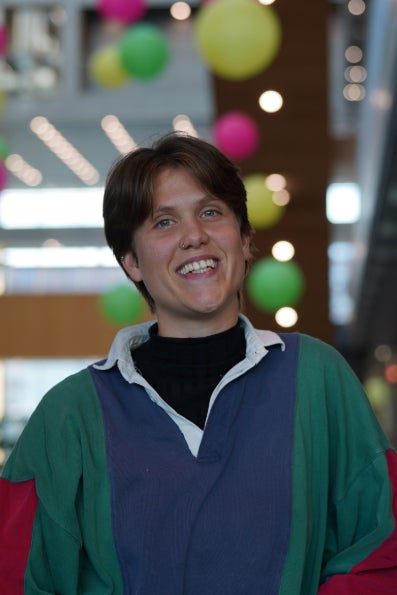In this article, she shares what the conference was like, the debates that got her thinking, and her vision for the future of learning.
Keeping up with the trends
Let’s face it, libraries have a reputation problem. They’re often considered quiet, static places. But behind the scenes at VU Amsterdam’s University Library, the reality couldn’t be more different.
Libraries like ours play a key role in education by offering tools and resources that make up-to-date higher education possible. This includes XR (Extended Reality) and VR (Virtual Reality) environments that allow, for example, law students to engage with immersive experiences like pleading in an authentic courtroom. Or 3D-printed teaching aids that bring concepts to life, like a set of small toilet bowls—part of a collection of avatars created for the board game Causes of Inequality, designed to spark discussion and engagement. And let’s not forget our unique heritage collections, which bridge the past and present, connecting education to history in meaningful ways.
Through partnerships like with the VU Centre for Teaching and Learning (VU CTL), we also help lecturers adopt new tools like AI (Artificial Intelligence) and other technologies to enhance their teaching. Or help and support lecturers with open education.
So, university libraries aren’t just about storing books. They’re about keeping education fresh and ready for the future. And we are keeping up with the trends on what’s next to stay ahead of the game.
Tech and teaching: a match or a hype?
One of the most debated questions at the conference was whether we should be tech optimists or pessimists. The edtech professionals I spoke to were often very optimistic, seeing AI as the ultimate problem-solver in education. They believed technology could address issues like accessibility, engagement, and personalization, offering solutions that traditional methods never could. On the other side, many educators were more critical, even sceptical. Their concerns went beyond whether AI works, to how it might impact education in unintended ways. Could it amplify inequalities? Would it shift focus away from the human aspects of teaching? All valid questions.
From my experience, I’ve noticed that educators typically feel uneasy about tools like ChatGPT because they challenge their control over what students learn. But as keynote speaker Gerd Leonhard pointed out: “AI has become our brain, but do we want our students to just be brains?” His message was clear: we should focus on creating learning environments that encourage students to think critically and become analytical professionals. With AI serving as a tool to enhance that process rather than replace it.


